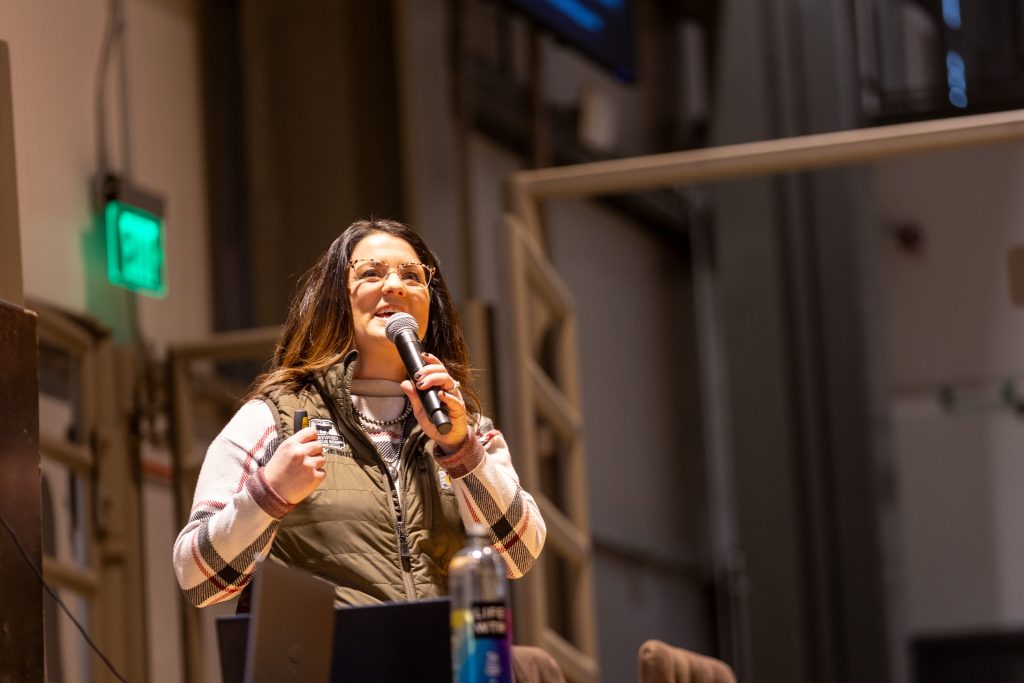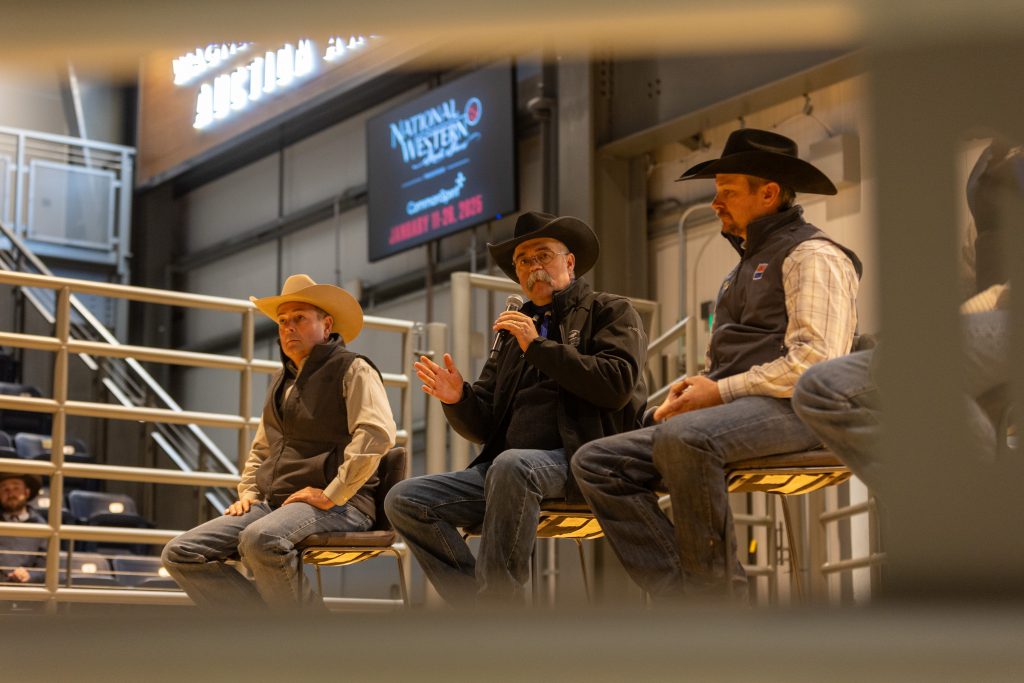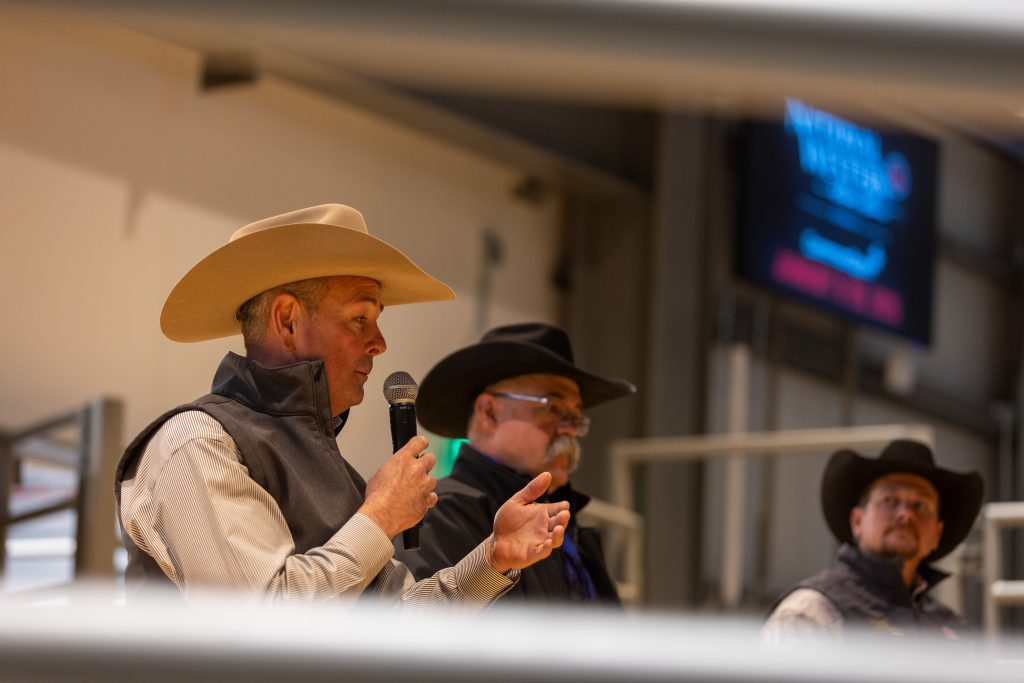Cattlemen discuss the art of selecting traits for progress in their individual herds

Sometimes being a cattleman feels like walking up to a buffet with endless options. Where do I start? Should I focus on the big picture or the details? How do I focus on just one thing?
Through educational sessions sponsored by the Colorado Angus Association at the 2025 National Western Stock Show, industry experts and boots-on-the-ground cattlemen discussed the value of balancing trait selection to achieve forward progress.
The session kicked off with a presentation by Kara Lee, director of producer engagement at Certified Angus Beef (CAB), followed by a panel discussion. The panel was comprised of moderator Kevin Ochsner, host of Cattlemen to Cattlemen on RFDTV, and industry perspectives including — David Brown of Montana Angus Ranch, Darrell Stevenson of Stevenson Angus, Anton Hermes of Hermes Livestock who is also an ABS Global representative, and Oakley Kelley, herd manager of Double RL Ranch.
The American Angus Associationâ offers a suite of 30+ EPDs and dollar indexes to help measure an animal’s performance. But what’s top priority when given such vast information? For Stevenson, the nucleus of the herd is the cow, and every input should focus on her continuous improvement.

“I believe first and foremost, those females have got to look the part, and then we’ve got the advantage, the art and the science and the genomically-enhanced EPDs that makes things even easier,” Stevenson said. “Today, we can move these cattle farther and faster than ever before, we just need to know where to govern that out.”
When asked how producers can use particular EPDs to find optimums and maximums, Kelley encouraged his approach of finding a baseline before setting long-term goals.
“As somebody that is really focusing on high-quality ribeye, we have to have a baseline,” Kelley said. “You need to figure your baseline and then figure out how fast and how far you want to proceed and over how many years.”
In addition to EPD indexes, Association programs like Targeting the BrandTM, AngusLinkSM and the Genetic Merit ScorecardSM allow commercial cattlemen to capitalize on the marketing value of their product.
Stevenson remarked, his customer-base magnetized to genetic testing and these programs because of their capabilities as a section tool, a scoring tool, a culling tool and ultimately as a profiting tool.
“Customers latch on to the feeder calf marketing program and for me, the AngusLink program, because it’s provided a tremendous amount of opportunity,” Stevenson said. “Start with genomic testing, whole-herd or replacement-type female selection and then tie yourself to a marketing program — these guys have seen tremendous results creating margin.”
Striking balance isn’t just for the seedstock procurers, commercial cattlemen can tap into it too.

“They want to get from calving season to weaning time to getting their check. It’s a bad cycle. We’ve got to change that mindset to where everybody is thinking about the future,” Hermes said. “When you want to be sustainable in the cattle industry, whether you’re a seedstock guy or a commercial cow-calf producer, you’ve got to take a balanced approach.”
Rest assured this balance all serves a greater purpose — the consumer. After all, the demand for high-quality beef drives our industry, Kelley said.
“They want taste, they want quality, they want consistency,” he said. “What we learned with our herd was we couldn’t just chase carcass, we had to go back to the female. The female had to make the herd, and I think that’s our emphasis now is building that maternal cow herd, but not sacrificing carcass traits.”
That inclusion of carcass traits leaves room for increased revenue for producers. Lee brought to attention the opportunity for marbling selection to increase profit, analyzing data showing it as largely the number one reason Certified Angus Beef â brand candidates don’t make it across the finish line.
“That’s why we talk about marbling so much, it’s not because we’re encouraging single-trait selection,” she said. “We talk about marbling because it’s the number one place that we’re leaving money on the table.”
It does not have to be an either-or decision with maternal and carcass traits, Lee said. In particular, she also addressed recent concerns that emphasis on marbling has led to decline in fertility and foot structure. Lee referenced recent disposal code data from the American Angus Association® showcasing animals removed for either fertility or foot structure purposes, which spanned a wide range of both high and low marbling cattle.
With the diversity in the Angus breed, balanced trait selection is possible, she said. It all comes back to the balanced approach, regardless of your industry sector. Balance in your selection criteria, balance in your focus level and balancing the ever-evolving demands of the consumer.
“When we think about our customer first — whether you’re breeding bulls and thinking about your commercial cow-calf customers coming to buy those registered bulls, or you think about the end consumer — you’re thinking about the end in mind,” Lee said.
Written by Briley Richard and provided, along with photos, by the American Angus Association.

















